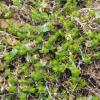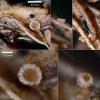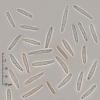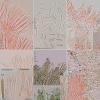
20-12-2025 23:08
Patrice TANCHAUDBonsoir, récolte sur sol sablonneux dans l'arri�

20-12-2025 15:47
Mirek GrycHi.These grew on pine wood that was heavily covere

18-12-2025 21:17
Pol DebaenstThe identification took me to Byssonectria deformi

15-12-2025 07:09
 Danny Newman
Danny Newman
indet. Rutstroemiaceae sp. on unk. fallen leavesMc

19-12-2025 10:10
Patrice TANCHAUDBonjour, récolte réalisée en milieu dunaire, a

18-12-2025 17:23
 Bruno Coué
Bruno Coué
Bonjour,je serais heureux d'avoir votre avis sur c

18-12-2025 18:07
Margot en Geert VullingsThese plumes were found on rotten wood.They strong

17-12-2025 18:35
 Michel Hairaud
Michel Hairaud
Bonjour à tous/Hi to everyone I am passing along
Hi to all
These minute (up to 0.35 mm) urceolate apothecia were growing on the underside, on dead parts of Arenaria grandiflora L. subsp. incrassata, a postrate small plant living on calcareous rocks. This collection was made at Saliencia, Somiedo, at 1400 m of altitude.
The 8-spored asci, 39-58 x 5-8, arising from croziers, IKI b. Ascospores cylindric or cylindric-clavate, (9-)12(-17) x 1.5-2.7, with some polar small guttules. Hairs apex 2-5 microns broad, with a spiny ornamentation. The prismatic cells of the ectal excipulum with granules of ochraceous pigment.
Maybe this fungus is close to the more caulicolous 'Cistella grevillei complex', with shorter, different ascospores and larger apothecia, but I'd like to know your opinion
Many thanks in advance

not a easy one, the hairs tend to look more like aconitii, sporesize could fit too in the lower range but the content is missing, this could be a undescribed taxon in the grevillei group. Did you see any aborted spores in asci that explains the sizedifference in spores or spore dimorphism as in Dasyscyphella where lower spores are smaller as th ones in the top?
Stip
Hi Stip
I not noticed any abnormality inside the asci and I couldn't see 4-spored asci that explain us the hihghly differences in the spore size
Thank you very much for ypur opinion




